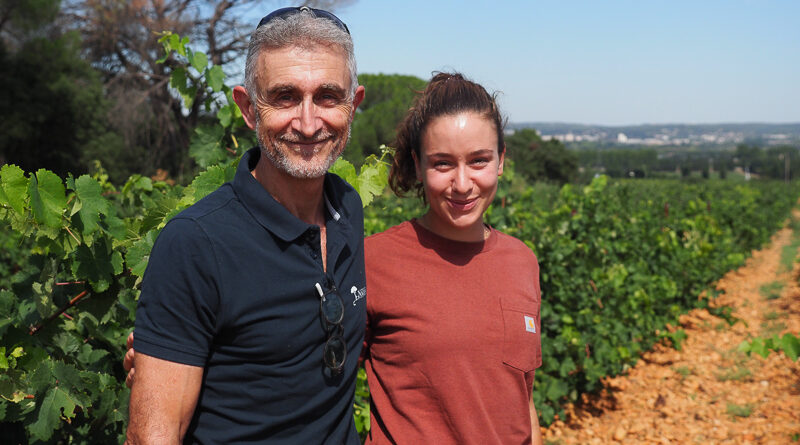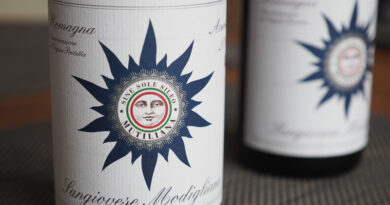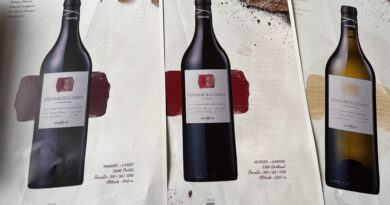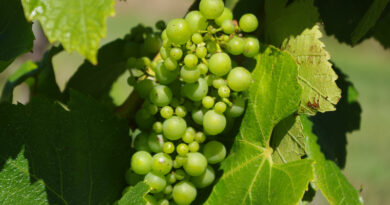Exploring Costières de Nîmes (3) Michel Gassier and family, adopting regenerative viticulture
Website: https://www.famillegassier.com/en/
Michel Gassier is one of the leading producers in Costières de Nîmes, and has two domaines, making three lines of wines (Château de Nages is the family property, and Domaine Gassier is Michel’s creation.) I visited with him and his daughter Isabel, who is now working with the family company after a spell in California, to find out more about the appellation, and also their particular approach, which has embraced regenerative farming – something that Isabel first came about in her time in the USA.
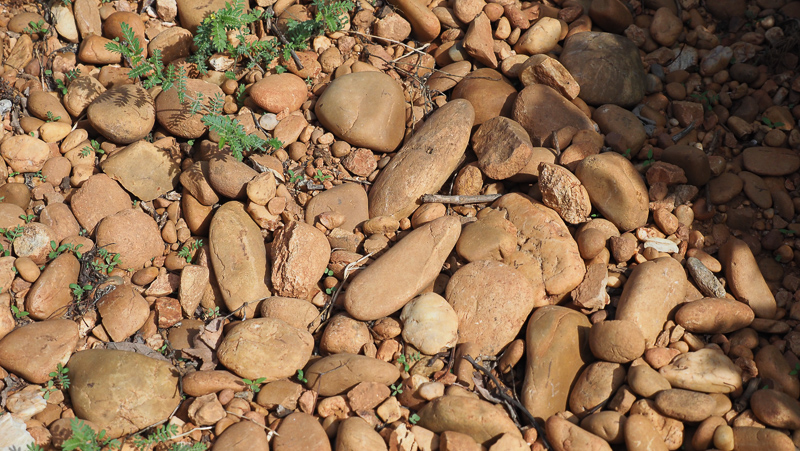
What makes the Costières de Nîmes special? I asked. There seems to be some consistency in the terroir, but there must be differences too?
‘It is important to explain why we are part of the Rhône Valley, because so many people say we don’t know where you are,’ says Michel. ‘There is one single obvious reason: the soil. Our soil was created by the Rhône just like the rest of the Rhône Valley. It’s rolled pebbles and actually the largest terrace or rolled pebbles within the Rhône Valley.’
‘What makes us unique? Our microclimate. We are the Rhône Valley under a maritime influence. It is our microclimate. We are way closer to the sea and the marshes of the Camargue than way inland, and we do have a very specific microclimate exemplified in the summer by the sea breezes we get in the afternoon. They cool off the temperature and also bring some moisture in the air so it is not quite as dehydrating.’
‘The land is cold in the morning, and by midday when the sun has hit on the rocks they become hot, so the air rises. The sea has the same temperature whether it is midnight or noon, so the cooler air gets sucked in. The mistral blows from the Rhone Valley and is oriented N/NE. This is a drying wind, and we have at it at its strongest in the beginning of spring and at the beginning of winter. It is a macro weather system where the Mediterranean is a hot pocket for Europe. Colder air comes in from the north as hot air rises from the Mediterranean, and the Rhone valley acts as a funnel. It rarely blows in the summer, but if it does, we don’t get the cool nights.’
A map of land usage from back in 1770 showed that the area under vine here was pretty much the same as it is today. ‘We are the most recent AOP in the Rhône Valley so in people’s minds you must be new to winemaking,’ says Michel. ‘Here, in 1770, we are already making lots of wine. Wine has being made here for 2500 years.’
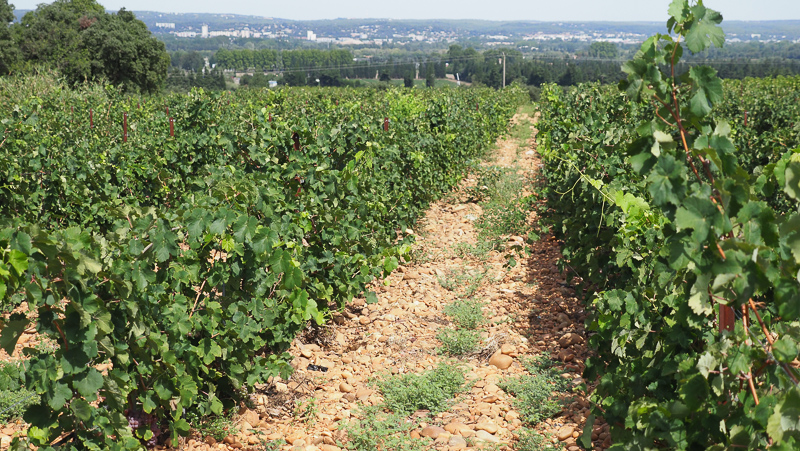
I asked for more detail on the soils. ‘Most of the terroir in the Rhône is those smooth rolled pebbles, very homogeneous in colour,’ says Michel. ‘Depending on the elevation and the strength of the Rhône the soils are either smaller or bigger. Usually at the higher points you might get the bigger ones. They are made of gres, which is sandstone and quartz. They were taken off the northern alps because the Rhônes source is the Geneva lake.’
Isabel Gassier adds that their soils are highly evolved. ‘You could dig deep and not find any bedrock,’ she says. ‘So what’s happening is that with rainfall and erosion some of these rocks decompose into finer sediments, and this is settling in the deeper horizons. When you are on top it is mainly rocks, and as you go deeper and deeper there is a higher percentage of clay, hence the ability to carry vineyards even though when you look at the surface you think how can things grow on something so stony.’
The appellation is mostly a plateau. But what happens when you go over the edge of the appellation?
‘There are a few spots in the appellation on fault lines,’ says Michel, ‘and the terroir we have in the south isn’t from the Rhône but the Durance, which is a tributary of the Rhône. Here we have smaller stones that are more irregular, very different in colour. The mineral composition is very different. The Costières has a north-facing lip, a plateau, and a south-facing lip. The Durance is what you’ll find on the south-facing lip. The estate we have there is on a fault line that goes from Gigondas to Nimes. During tectonic movements the terroir from the tertiary period has risen. Before those rocky deposits this was a seabed. There we have quaternary deposit from the Durance versus the Rhône, and then we have the tertiary which is sand and chalk.’
Is irrigation common in Costières?
‘Yes,’ says Michel. ‘In the 1950s a canal was developed, the Baronne, pumping water from the Rhône and irrigating this entire area. This is why this area has more than just vineyards: lots of fruit trees and vegetables. It is a much more diversified agriculture.’
If you want to irrigate, do you have access to water?
‘Yes. It’s one of the elements that is critical for us migrating to regenerative agriculture. As we develop ground cover we increase the need for water, and there is competition. We feel now, with the recent years we have, that unless we have access to water, we can’t start building solid ground cover because of the stress.’
Isobel adds, ‘we are not at the stage where we have soils that are well structured and have high organic matter. And we have been cultivating for many years in this region.’
‘We are migrating towards regenerative viticulture,’ says Michel. ‘There is so much we need to learn before we can be implementing something coherent, even with our equipment. We are on our second seeder. It depends on how you prepare your soil, the weather that year. Whether your land is full of seeds you don’t want, whether you have been able to clean it up. This is just for the ground cover. When you think about raising insect populations so there is food for predators, you have to learn about the insect world.’
They have been working with a French consultancy called Agroof, who specialise in agroforestry. ‘The cool part is that there has also been a huge investment from the French government,’ says Isobel. ‘In each territory, companies who have expertise can come in and bid for the cash. We have local experts, people who are highly trained, helping implement this, and the government is helping. Agroof is also working with investors who want to offset their carbon footprint.’
Gassier have been wine and fruit producers for four generations. ‘I work with my brother, and he runs the fruit business, even though I oversee all the farming activity,’ says Michel. ‘It was something that was pretty common, but now most people have specialised. We believe it is a great opportunity for regenerative agriculture to mix and not have monoculture.’
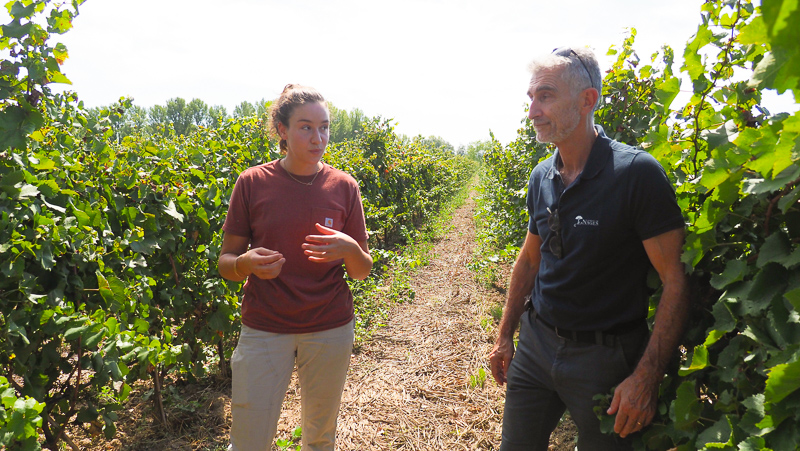
Isobel was working for a vineyard management company in Sonoma, California practicing regenerative viticulture, called Enterprise Vineyards led by Phil Coturri. ‘He was a pioneer in organic viticulture and this is the only organic vineyard management company there,’ she says. ‘He has been part of the original hippy organic movement that is very much into regenerative agriculture. Compared with organics here in France it’s a couple of steps ahead, with extensive cover cropping and insectaries everywhere. There was also this idea of conservation of local species.’
‘The impetus for moving into regenerative agriculture comes from Isobel,’ says Michel. ‘She was always very enthusiastic, talking about what she was doing, and she sent me a couple of books. She told me to watch some videos. There is one book that was incredible and helped convince me, by John Kempf, Quality Agriculture.’
‘Most of the people he interviewed were farmers, but they were also scientists, and they were doing it on a large scale. It was not just a guy with 3 acres. These guys were farming 1500 acres and it was working.’
For Isobel, working in California, the vineyards were making good money from their grapes. ‘For all the farming I was doing we were selling our fruit at the lowest for $4500 a ton,’ she says. ‘Some of our Oakville fruit was $17 000 a ton. So of course, you do everything and nothing is a no. But if you want to motivate people to do this and for it to have an impact, it needs to be large scale.’
‘We have an incredible opportunity,’ says Isobel. ‘We do have water. I don’t know for how long, but we have it, and we have started transitioning some of our blocks.’
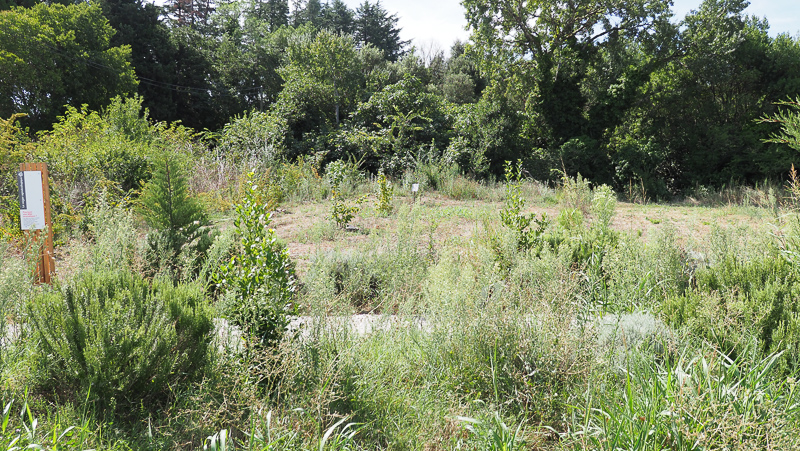
We took a trip to an area of land that they have been restoring for biodiversity. ‘This is a spot we were able to acquire,’ says Michel. ‘It’s a wooded area with a permanent stream of about 10 hectares. On one side we have an organic peach orchard in which we have started a diversified regenerative approach. Then on the other side of the woods we have a vineyard that is very young, three years old, so we don’t yet have ground cover: we feel it is too much competition.’
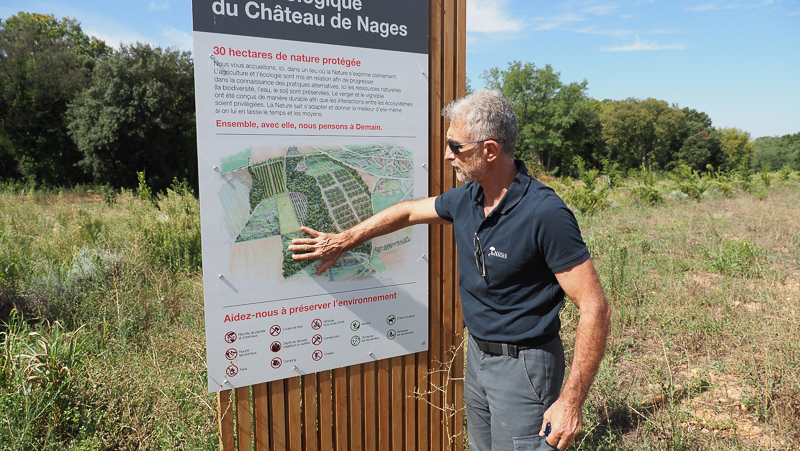
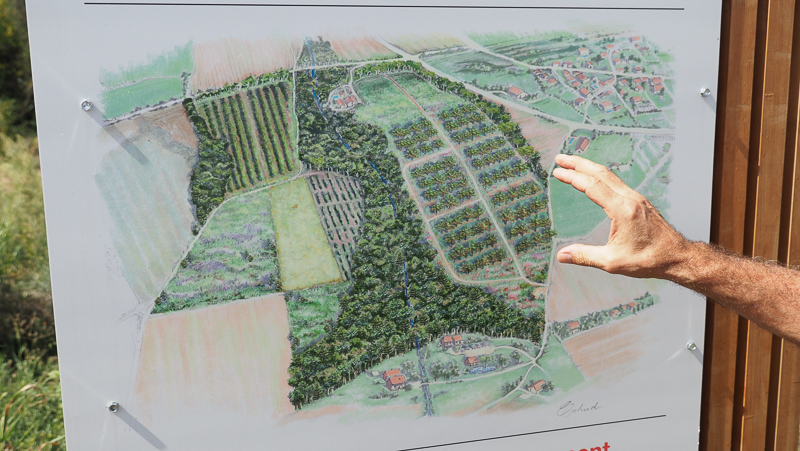
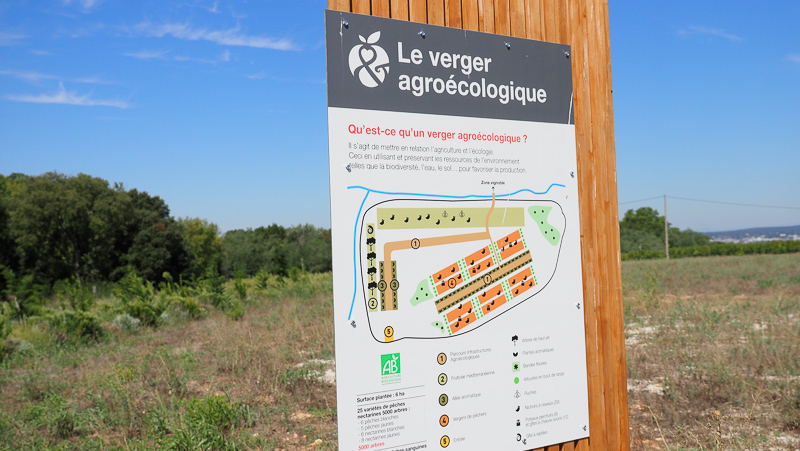
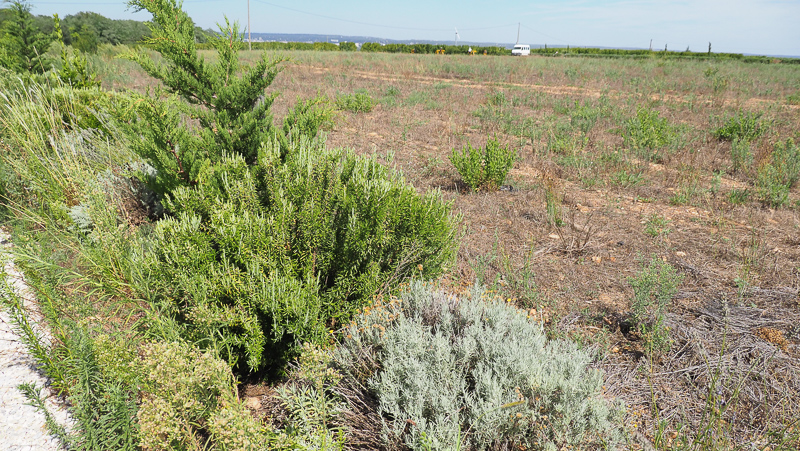
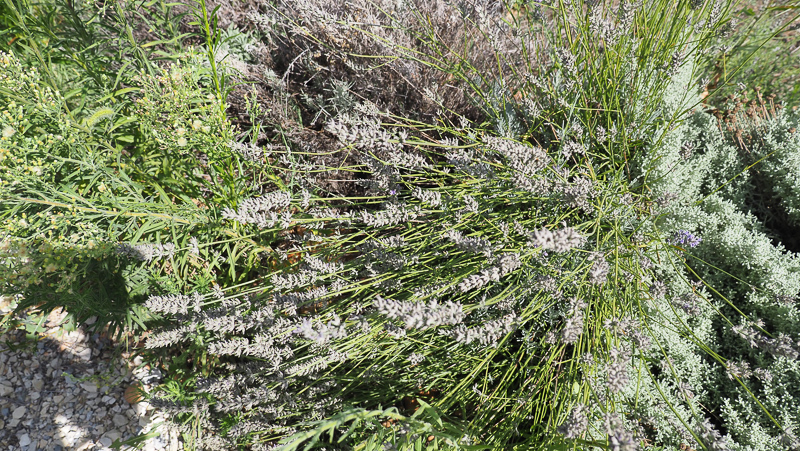
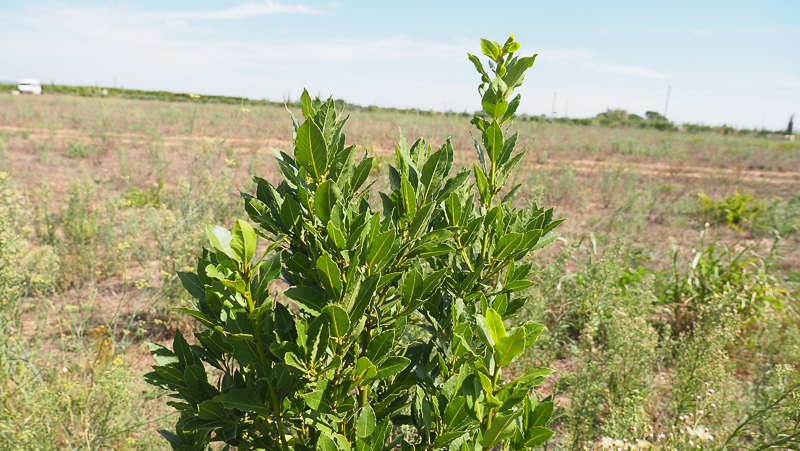
‘We acquired this zone about 10 years ago. It’s 35 hectares and we have 10 hectares of woods, with a permanent stream. When we started this project we had a team that evaluated the ecosystem here, and they told us that in order to have life you need food, water and shelter. This is what wooded areas are doing. Then we planted the peach orchard with a concept of increasing the diversity of trees. We planted trees that weren’t present in the woods, but were important to the wildlife. We created a lot of aromatic aisles as insectaries. We have lined up the plot with a hedge that is also diversified. We use a lot of thorny bushes: apparently thorny bushes are great because the little birds are hidden from their predators. They can’t dive bomb and grab them.’
‘We are lining up this area with signs. We want it to be educational for people. We feel that the population does not understand agriculture, and at the same time the people are looking forward to having a nice walk somewhere, where we explain the fruit trees, diversification for pollen, and therefore for insects. In regular agriculture, you destroy insects. Obviously, the ones that are detrimental to your crop, but I did not understand the concept of having as many insects as possible: the vast majority are not damaging your vines.’
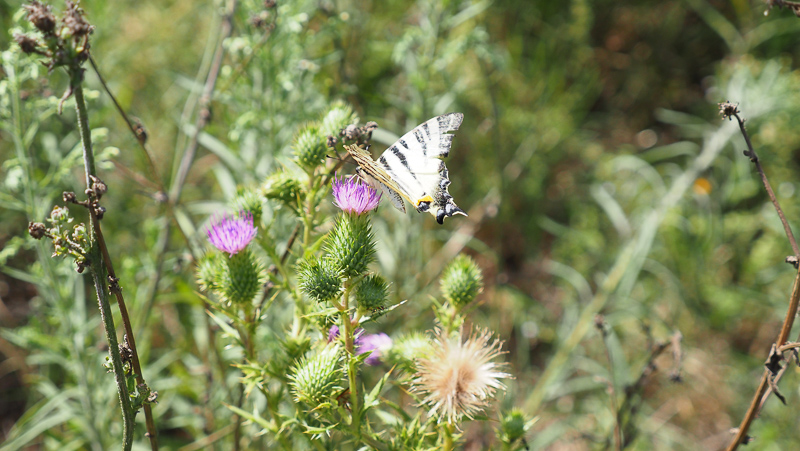
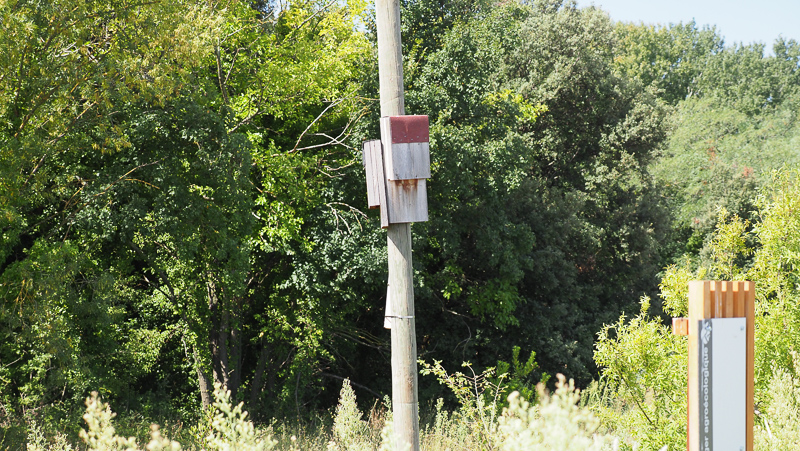
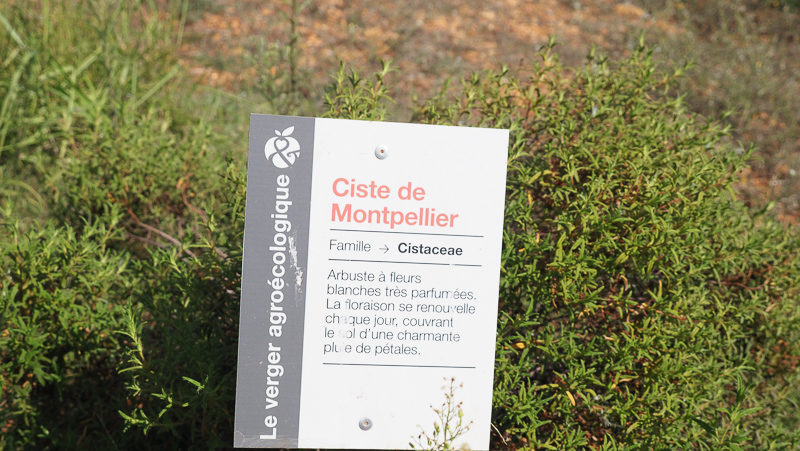
Isobel adds, ‘The more species, the more it’s balanced and populations are kept in check, and you can’t have one pest that ravages you, because you can only get small impacts from a few of them. We have bat boxes, owl boxes and perches. Over here, in our region, bats are a very important part of our ecosystem. We have at least four different types of bats that live here and are somewhat native to here. There is a big effort locally for bat habitat conservation.’
‘The beginning of each row has a regular tree,’ says Michel. ‘The idea is for the birds to have hiding places to fly out of the forest, into the crop zone, having places to rest and hide as they are merging into your crop. We also have a reptile zone: it is a pile of dry stones. It is for snakes and stuff so we have closed it off with a fence, but the snakes can go through the fence.’
‘And over there, you can see we have bees. They are not our beehives: we partner with beekeepers who keep their hives here. In the same way, we partner with sheep herders. We have sheep that come in and graze in the winter. They keep things clean and bring some good microbiotic activity. We have been in harvest mode for peaches and grapes, so most of our resources have been focused on harvesting fruit, so we have kind of neglected the upkeep. But an area like this takes a lot of hours to keep it clean.’
So is this sort of thinking something that may be applicable for vineyards as well?
‘Completely,’ says Michel. ‘Some people who are just growing vines want to tell you that vines are not like every other plants. This isn’t true: the vine is a plant. The logic applies.’
Isobel adds, ‘you were asking about how we go about the transition, and I think that the way we are looking at it is, we have vineyards that my grandfather planted that are no longer doing brilliantly, or the variety is no longer adapted to the climate, and we are redeveloping some of our vineyards.’
So you are thinking of how to do it right from the beginning, to be commercially and environmentally sustainable?
‘Yes,’ says Isobel.
Michel adds, ‘unfortunately, AOP rules are unbelievably rigid. For instance, the common thinking was that vines need to suffer to make good vines. To me, this isn’t true. I always use the parallel of the athlete. You need to eat enough to be performing, but not too much that you are fat. The vines have a minimum they need, and too much suffering does not create great wine. Excessive feeding does not create great wine, either. These past 20 years it has all been about increasing the density of plantings. If you look at the way the climate is evolving, I want to do the exact reverse.’
‘You need wider spacing and high vigour rootstock,’ says Isobel.
‘We went to low vigour rootstock,’ says Michel. ‘What I have planted these last 15 years is 4400 to 6000 vines/ha. Now with regenerative I am saying this is stupid, I shouldn’t have done this.’
Isobel continues: ‘Our perspective is that on the one hand there’s what we are developing, and now that we know what we know, and we have the tool, how do we develop a vineyard intentionally to be both economically and environmentally sustainable? But with vineyards that are already planted, it is how do we retrofit this? In this case, I think we are going to have to be extremely patient. I did some experiments with cover cropping and crimping, keeping a mulch. In our climate, I have a hard time: I don’t think I can have things growing in the vineyards from May to September. I like the idea of a mulch, and have this filter the light and not allow seeds to germinate.’
‘The likelihood is that on quite a few blocks I am going to need to grow cover crops, and work on having the best cover crop take, and waiting the latest possible to incorporate it. But I think that for a couple of years in order to build organic matter and structure, there will have to be a little bit of mixing it in, even if that means burning off some of it.’
‘You have to walk before you can run,’ says Michel. ‘People ask me, how long do you think this will take you? My answer is, at least 10 years, and Isobel’s answer is a lifetime.’
‘I say that it is the objective of my career,’ says Isobel. ‘I don’t think believe things are going to go that fast. When you see that it takes twice as long to put carbon in the soil as it does to burn it, then it is absurd to think that after so many years of depleting my soils it is just going to take 10 years to rebuild it and fix it.’
Michel adds, ‘some of the testimony is that people say that after five years (I don’t know in what climate or what kind of soil) they are already seeing a big difference in organic matter. But I think that in our climate with our rocks, it will take a little longer.’
‘Jason [Jardine]’s example at Hanzell is a very encouraging one,’ says Isobel. ‘His farming is incredible. It’s a similar climate and very rocky soils. Sonoma has a similar climate and gets as hot, and is drought prone. The soils are volcanic, and even on very shallow soils there was so much natural vigour because the soils haven’t been farmed for 2000 years and minerals are present in abundance. Our soils are quite different and plants don’t respond in the same way.’
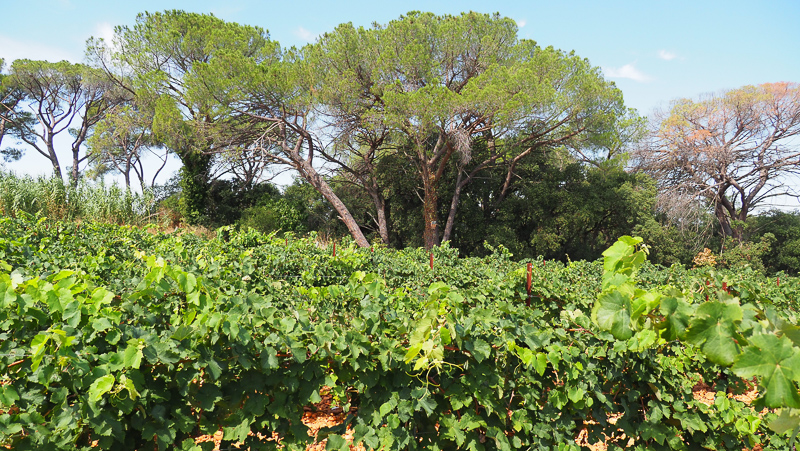
We move on to look at another plot of land. ‘This is the last plot we acquired, and it’s still farmed by a Zucchini farmer,’ says Michel. ‘This will be part of the whole concept. We are going to be trying much smaller plots. Instead of having a block of peaches and a block of vineyards, we will have smaller blocks with polyculture.’
Is polyculture economically feasible? If so, this could be interesting. Immediately you are defeating some of the monoculture element.
‘This is what my family has been doing for four generations, so we think it can work,’ says Michel. ‘The reason why people went to monocrop is because the pressure for performance (this could be technical, marketing or sales) required specialization. My dad used to produce commodities: bulk wine that he sold to a negociant, and bulk fruit that he would sell to a negociant. When my brother and I came we realized this model was no longer economically viable. We had to integrate the marketing part of our field in order to capture the added margin, and also we needed to have our finger on the pulse of the market, therefore making our crops evolve faster.’
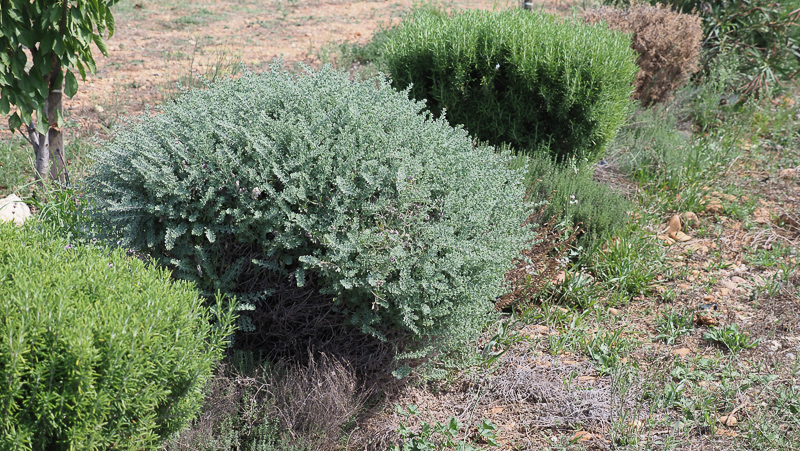
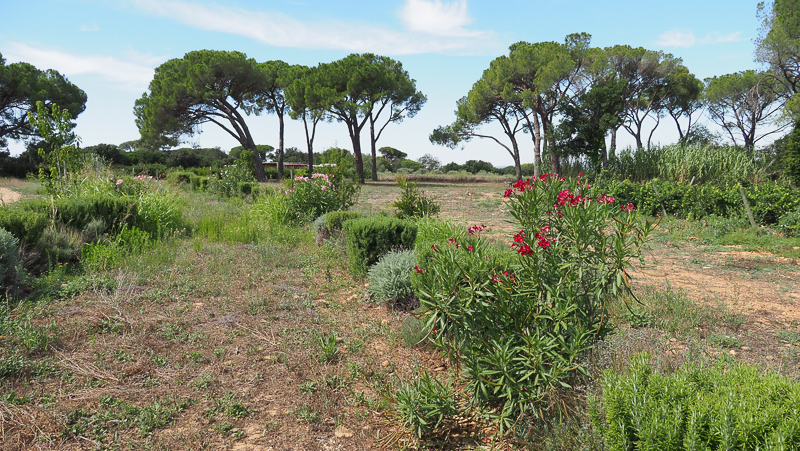
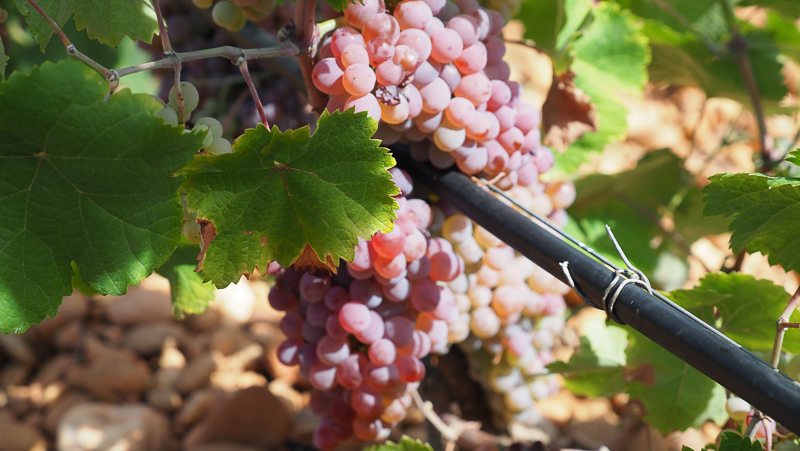
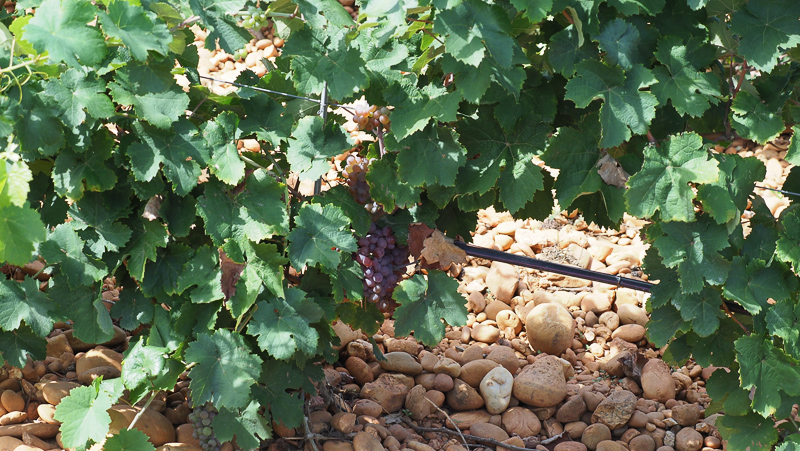
When did you start?
‘Thirty years ago. We had to bring a vast amount of expertise in. My dad was making one red wine. That’s it. Bottling, marketing, sales. Then we needed to start communications: social networking and videos. All of a sudden, what we needed to be competent in is so much greater than the other generations. I feel like regenerative is adding the same layer of complexity to farming today that what I had to learn. To me this is feasible because there is a new generation, and because there is a team already in place to take care of day-to-day operations. It is a full time job just to manage this process, and you need a business that is healthy financially in order to finance all the experimentation that is needed.’
‘All my mistakes!’ says Isobel.
‘I feel like you need a certain scale, to have competent people,’ says Michel. ‘You can’t be competent in absolutely everything.’
This goes back to the idea that there are certain scales of winegrowing operations that work. Some things small and niche work, but you can’t grow gradually because there’s a danger zone: a scale that doesn’t work. There’s a dead zone, and you have to go from here to here in one go.
‘Absolutely,’ agrees Michel. We move on to one of their vineyard sites. ‘We have planted whites here, because it is a cooler spot behind the wooded area,’ says Michel. ‘We have Clairette and Grenache Blanc, two varieties that we like very much.’
‘And there is Grenache Gris,’ adds Isobel. ‘We don’t have cover crop yet because the vines are too young,’ says Michel.
We move on to a different vineyard which is outside of the AOP, and is on alluvial soils. For this reason any grape varieties can be planted, and they put Chardonnay in. Here they grew rye over winter and then rolled it in.
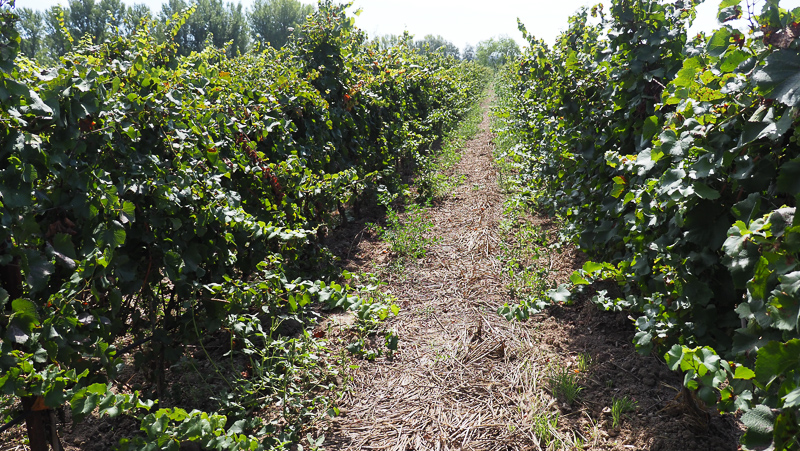
‘To me this is the really cool part,’ says Isobel. ‘We still cultivated under the vines, which is a standard approach. You don’t want plants growing into your vine. Here we are still focusing on cover cropping and not working the row, but under the vine we are starting experiments about having cover there. We are going to need equipment which allows us to mow under vine, which we still don’t have yet. Therefore, our transition is more focused in the interrows.’
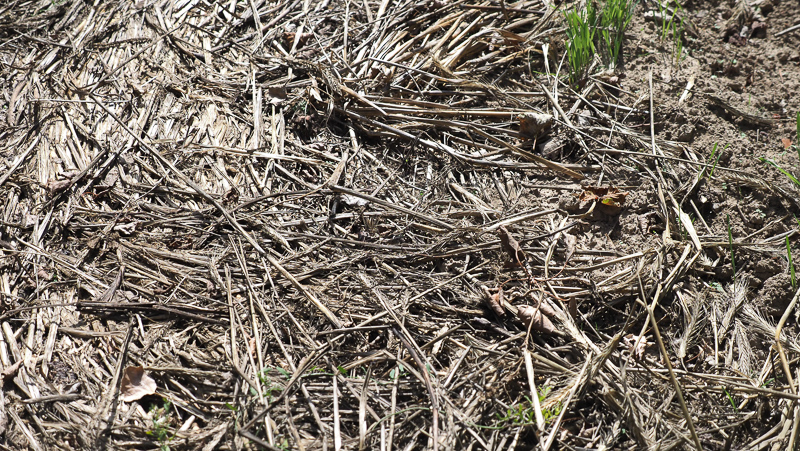
‘The aim is we won’t have to cultivate any more,’ says Michel. ‘Maybe a couple of times we just mow under, or we crimp.’
Might you sow another crop into this (mulched inter-row) and direct drill?
‘That’s what we are going to do this year,’ says Isobel. ‘You see how much stuff comes out. It likes disturbed soils.’
So when you make the switch to working like this, there will be annoyance plants that are an artefact of the seed bed of a worked soil in transition to different species that will grown in undisturbed soil, which are presumably less problematic.
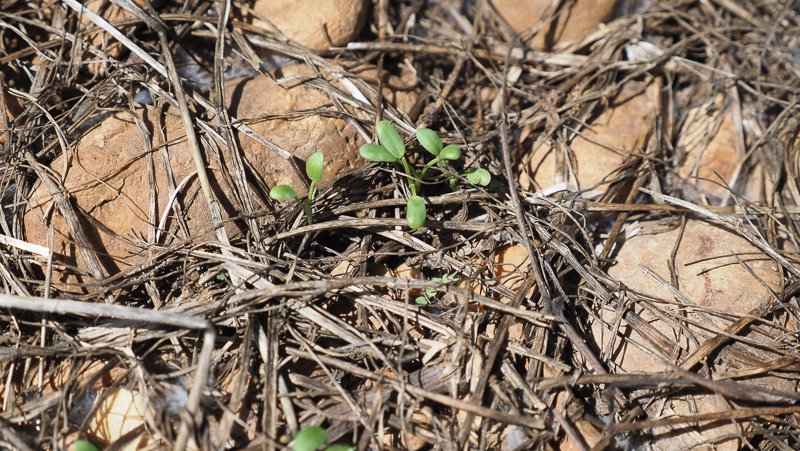
‘But the incredible part is that the first year we grew cover crop it was beautiful,’ says Isobel. ‘We seeded it in September last year, and it grew beautifully and we crimped it in April. We haven’t had to do any weed control. Roots are still growing through it, and if you feel it, this is wet: there is still moisture. This is the dream.’
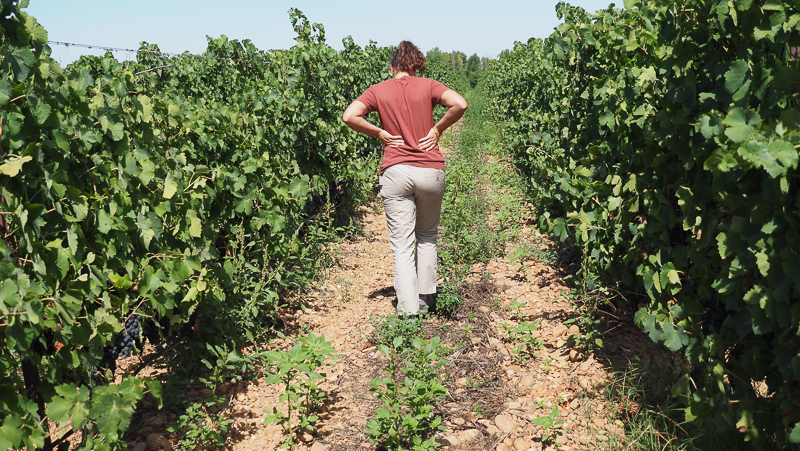
THE WINES
‘We love whites,’ says Michel, ‘we think we have a great terroir for white wines. They represent one-third of production. The market reaction has been great.’
Domaine Gassier Nostre Païs Blanc 2020
This is a wine that has an interesting evolution, like Alsace Riesling, says Michel. This is from the high calcium soil in the south, with Durance pebble deposits. Fresh, linear and slightly chalky with a touch of salinity. It shows pear, apple and some ripe citrus. So textural with nice finesse. There’s a delicacy here as well as some intensity. 94/100
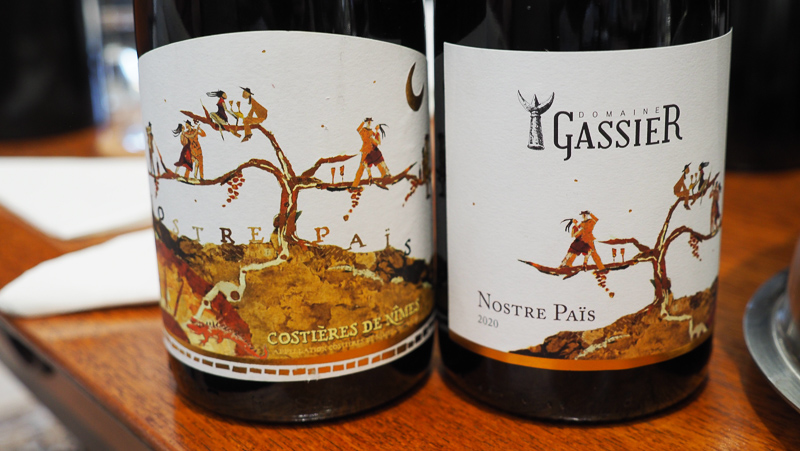
Domaine Gassier Nostre Païs Blanc 2012
Full yellow/gold colour. Crystalline mandarin fruit with some petrol hints: this smells very like an old Riesling. This has a tapered palate with nice sweet pear and apple fruit with a nice mandarin edge and some pleasant development. Some marmalade and toast too. Very interesting. 93/100
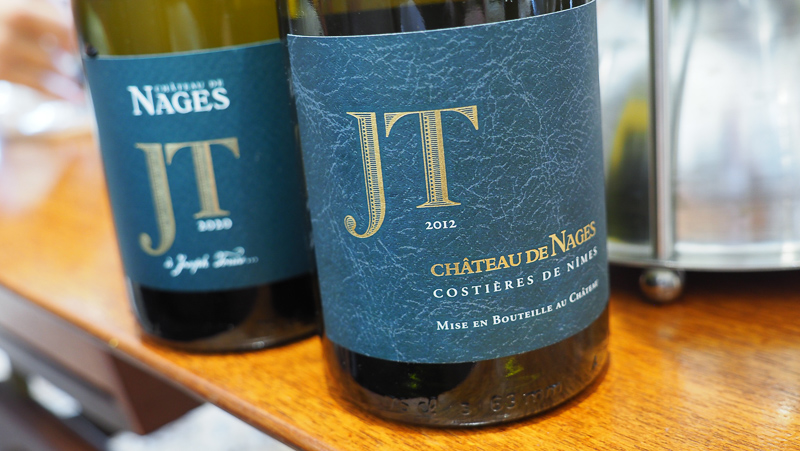
Château de Nages JT Blanc 2020
14% alcohol. Northern side, a Roussanne-dominated blend. Hand harvested, wild ferment in 500 litre barrels. Complex, fine and refined with lovely citrus core and some mandarin and apricot richness, as well as some subtle toast. This is supple and really expressive with nice weight and depth, and some fine spiciness. 93/100
Château de Nages JT Blanc 2012
Full gold colour. Lovely aromatics of toast, cabbage, peach and canteloup melon. The palate is fresh and supple with lovely crystalline fruit. There’s a sweetness to the fruit and it’s delicate and refined: it has aged beautifully. A hint of truffle here. Really expressive. 94/100
Michel Gassier Lou Coucardié Blanc 2017
Roussanne and Viognier with a bit of Grenache Blanc. Toast, peach, spice and some lovely ripe citrus here. Has nice density with lovely expansive fruit, showing pear and melon. This has lovely density. A rich, complex wine with nice density. 94/100
Michel Gassier Lou Coucardié Blanc 2011
Yellow gold colour. Fine pastry and toast on the nose with some spice. Complex and crystalline on the palate with some pith, ripe peach and pear, and a touch of apple. Opulent and delicious with lovely weight and complexity. 94/100
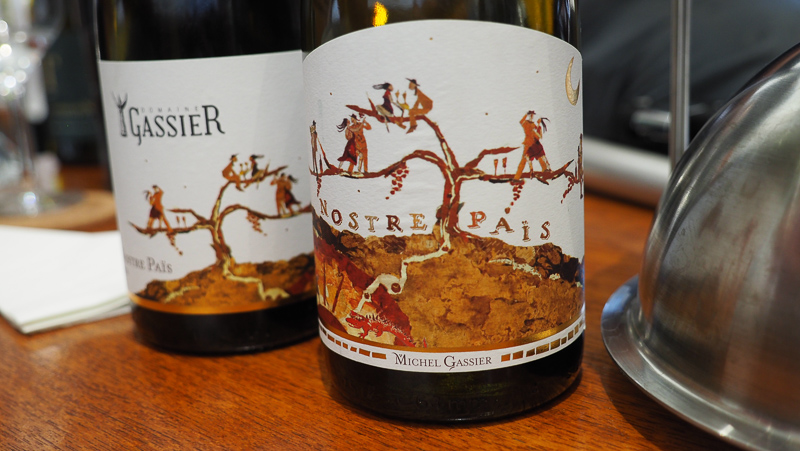
Michel Gassier Nostre Païs Rouge 2020
Southern end, Grenache and Mourvedre, both 50% whole cluster, plus Syrah. Wonderful floral red fruit/cherry perfume with lovely green hints. This is so juicy and fine with lovely freshness: balanced, fine, floral with lovely raspberry and cherry fruit. Very fine and detailed. 95/100
Michel Gassier Nostre Païs Rouge 2010
At the time they didn’t use native yeasts or whole cluster. Ripe aromatics with some appealing evolution, showing a touch of malt. The palate is ripe and supple with nice freshness and some ripe strawberry and raspberry. It’s still very much alive in a mellow, smooth place but with good acidity. Lovely fresh finish. 92/100
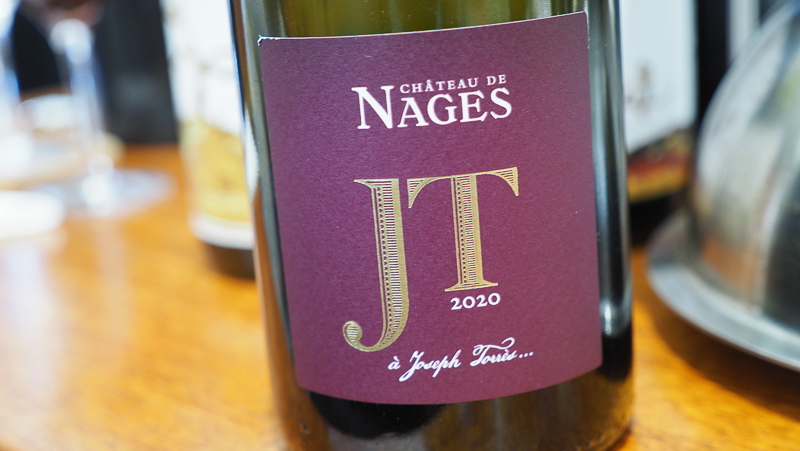
Château de Nages JT Rouge 2020
95% Syrah, 40% whole cluster. Lovely black cherry and blackberry fruit on the nose with lovely perfume. There’s great concentration on the palate with elegant black fruits and a lovely silky texture. Peppery and supple, with depth but also drinkability. Floral and expansive. 95/100
Château de Nages JT Rouge 2009
They now extract a lot less and use more concrete. This was more extracted and 100% oak aged. Concentrated, dense and structured with firm tannins under the deep black fruits, with some hints of tar and pepper and even some leather. Still dense and tannic. 91/100
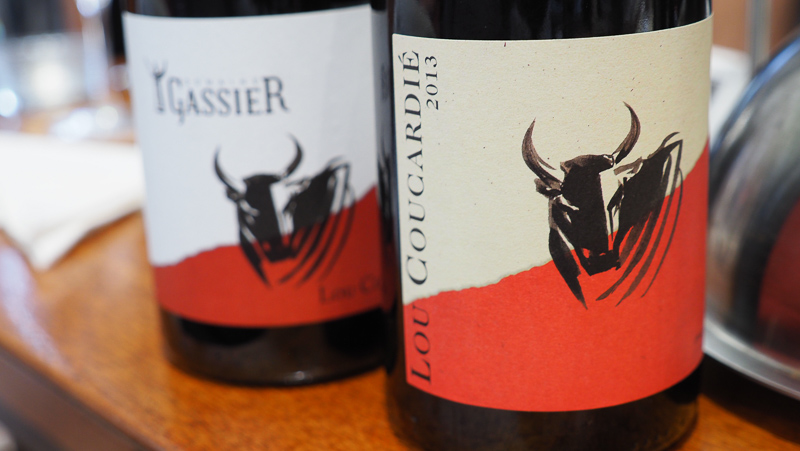
Michel Gassier Lou Coucardié Rouge 2017
Mourvèdre-centric, from the south. Two years of elevage. Taut, structured and quite peppery with grippy tannins and notes of tar and dried herbs. Such density and structure: very Mourvèdre with an edgy personality. Really impressive in a distinctive style. 93/100
‘In terms of drought resistance, Carignan has the most by far, then Grenache, then Mourvèdre,’ says Michel Gassier. ‘Syrah is a long way behind. Mourvèdre can handle heat but not drought.’
Michel Gassier Lou Coucardié Rouge 2013
This was a late year, making austere, high-acid wines. So this was put in old barrels and left for a year. It was OK, but today it is one of Michel’s favourite wines. This is supple and fresh with firm tannins and nice juicy red fruits. It’s expressive with dried herbs and iodine with a lovely juicy quality. This has developed really nicely in an austere way. 93/100
Find these wines with wine-searcher.com

